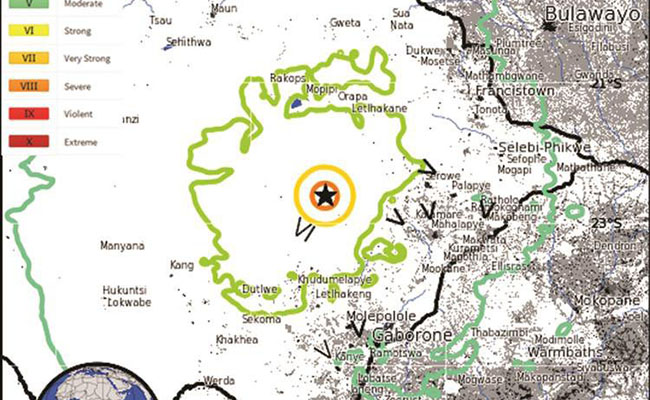EDITORIAL COMMENT: More earthquake preparedness needed

THE fairly powerful 6,5 magnitude earthquake that hit central Botswana on Monday night and which shook large areas of Zimbabwe fortunately appears to have caused no casualties and even in central Botswana only very minor damage.
But it could have been different if, for example, the epicentre had been in a built-up area rather than a sparsely inhabited rural district. It is unlikely that anyone in Southern Africa is well prepared to deal with a major earthquake.
Yet the most surprising thing about Monday’s earthquake was that it happened where it happened. Southern Africa is geologically very stable with a vast ancient craton underlying the region.
The only nearby events that should produce the odd earthquake is the East African Rift, and there have been recent moderate quakes in the Save Valley in Mozambique.
But any geologist asked on Monday morning to make a prediction of an earthquake in Botswana would probably have said zero. This is almost certainly why there is going to be a far more detailed investigation into what happened by Botswana geologists backed up by a team from South Africa.
The reason for the quake needs to be known, as it is not that probable that it is due to tectonic plates moving against each other, the source of almost all earthquakes although not quite all. And it looks like the Botswana quake was one of that tiny minority since there is no tectonic boundary in Botswana.
No doubt Zimbabwe’s geological community will be monitoring the research with interest and will be able to explain and pass on any relevant facts.
There has been some criticism of Zimbabwe’s Meteorological Services Department for not being more active.
Yet this criticism seems unjustified. It is unusual for a unit specialising in atmospheric science to have available resources and experts in earthquakes, and in any case the department is not the unit that responds to natural disasters, it is the unit that warns and passes on measurements and reasons.
For floods and the like it is the Civil Protection Unit that then deals with the results.
Earthquakes were only dumped into the department way back in early colonial times because the department owned the only observatory, in Bulawayo, and earthquakes are so rare in Zimbabwe that having a specialised extra unit would be a luxury.
Yet now that Zimbabwe has universities and a community of top-flight geologists there is perhaps ground for the measurement and research functions to be moved from specialists in another unrelated scientific discipline to specialists in geology, even if a university becomes the centre of measurements.
And it seems obvious that the Civil Protection Unit, which is responsible for dealing with natural and man-made disasters, should at least assemble a basic reaction plan for dealing with an earthquake that can cause damage in Zimbabwe, either a particular vicious one at the southern end of the rift valley which could well cause problems in parts of Zimbabwe, or one of these far rarer ones that seems to have hit Botswana.
Presumably at the very least this would add sources of earth-moving and rock-moving equipment to the lists of other requirements, such as fire-fighting equipment, and might well include a list of mines where engineering services are available.
When earthquakes cause severe damage the main requirement is being able to dig injured people out of the rubble very quickly.
Much of this preparation is paperwork, but also getting the people who would have to deal with such a disaster to think about what they would have to do, so if it ever happened they would know at least how to start.









Comments